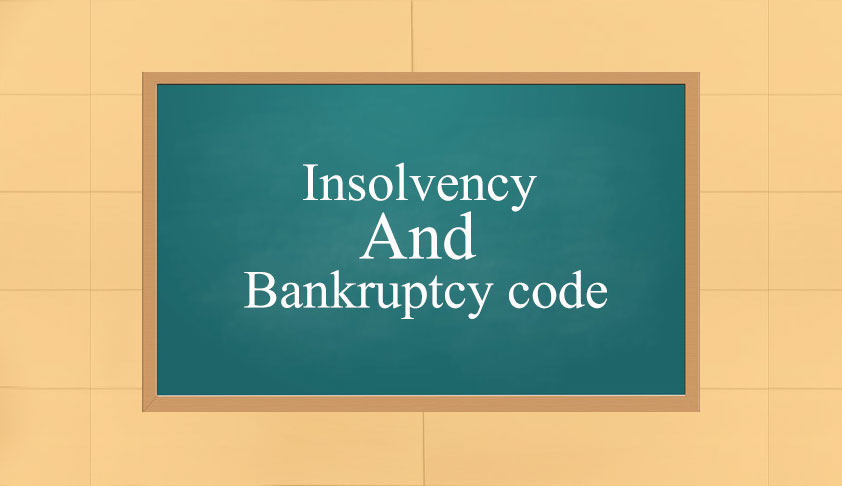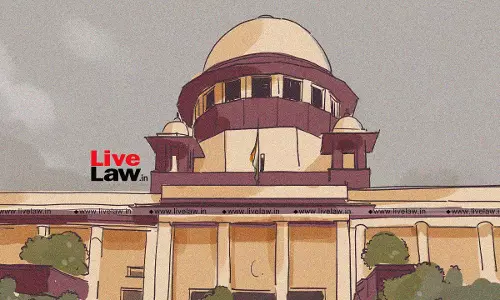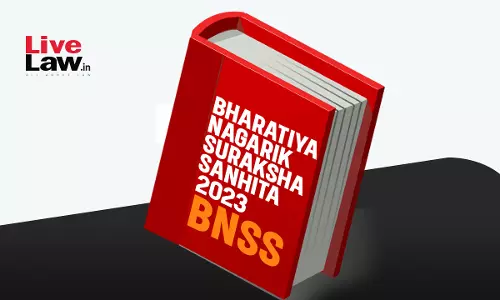
On November 23, 2017, President Ram Nath Kovind had given assent to the Insolvency and Bankruptcy Code Amendment Ordinance, 2017, making major amendments to the Insolvency and Bankruptcy Code. The aim of the Ordinance was to prevent certain parties from bidding for companies as resolution applicants due to their questionable antecedents. This was done to protect the credibility of the...
On November 23, 2017, President Ram Nath Kovind had given assent to the Insolvency and Bankruptcy Code Amendment Ordinance, 2017, making major amendments to the Insolvency and Bankruptcy Code. The aim of the Ordinance was to prevent certain parties from bidding for companies as resolution applicants due to their questionable antecedents. This was done to protect the credibility of the processes under the Code by disallowing backdoor entry of entrenched managements and preventing wilful defaulters from gaining control after securing huge haircuts. Hence, the intention of the Ordinance was unquestionably noble. However, it faced criticism for being sweeping in nature and by confusing good apples and bad apples. A bill making various changes to the Ordinance text was introduced in the Parliament to repeal the Ordinance. The Bill has been passed by both the houses and awaits president's assent. However, various concerns still remain under the Bill. This post analyses the Ordinance provisions, the issues in the Ordinance, the provisions of the Bill and whether the Bill has satisfactorily dealt with the issues that existed in the Ordinance.
Features of the Ordinance:
The Ordinance made the following major changes to the Code:
Definition of resolution applicant
Earlier, the Code defined resolution applicant as a person who could submit a resolution plan to the insolvency professional. The ordinance amended this provision to add that a resolution applicant will be someone who submits a resolution plan after receiving an invite by the insolvency professional to do the same. This was done to ensure that only people who are eligible as per the ordinance are invited by Insolvency Professionals to submit resolution plans.
EligibilityClause h of Section 25 (Duties of Resolution Professional) which provided for the duty of the resolution professional to call for resolution plans was also amended. The amendment provided that the insolvency professionals will only invite those applicants to submit a resolution plan who meet the criteria decided by him along with the creditors committee or by the Insolvency and Bankruptcy Board of India.
Barring of certain persons
The ordinance inserted Section 29A to the Code which prohibited certain persons from submitting a resolution plan and buying assets of the corporate debtor during liquidation. The words of the Section were as follows:
"29A. A person shall not be eligible to submit a resolution plan, if such person, or any other person acting jointly with such person, or any person who is a promoter or in the management or control of such person."
The above-mentioned main clause was followed by the list of persons barred from submitting such plans, which were: (i) an undischarged insolvent, (ii) a wilful defaulter, (iii) account has been identified as a non-performing asset for more than a year, (iv) has been convicted of an offence punishable with two or more years of imprisonment, (v) has been disqualified as a director under the Companies Act, 2013, (vi) has been prohibited from trading in securities by SEBI, (vii) has indulged in undervalued, preferential, or fraudulent transactions, (viii) he has given guarantee on a liability of the defaulting company undergoing resolution or liquidation, (ix) is connected to any person mentioned above (including promoters, management, or any person related to them), or (x) has indulged in these activities abroad
Retrospective Operation of the OrdinanceSection 30 provided for retrospective operation. It provided that the Committee of Creditors shall not accept the plans submitted prior to the Ordinance if the resolution applicant is ineligible after the coming in of Ordinance and in the absence of other plans, the resolution professional shall be required to invite fresh resolution plans.
Analysis of the Ordinance
The ordinance faced a lot of flak from the industry stakeholders. There were three main provisions that were found to be contentious: first, barring of persons holding NPA accounts for more than one year; second, barring of persons who had given guarantee to a creditor of defaulter undergoing insolvency or liquidation and third, barring of "connected parties".
Classified as NPA accounts for more than one yearMost flak was received for disqualifying persons (including promoters of companies) holding NPA account for more than one year. Though most of the discussion in the news has been regarding banning of promoters for bidding for their own firms, it must be noted that the ordinance barred the promoters from any IBC resolution process or liquidation process and not just bidding for their own firm. The argument that was raised was against the amendment was that such an amendment fails to distinguish between malfeasance and business failure and penalizes even "honest" promoters who might have piled up debts due to external factors by disqualifying them from the bidding process. The best example of this is the steel industry where cheap imports and government policies relating to gas supply caused the downfall of many companies.
A criticism that was also raised was that this amendment will be counterproductive as it will result in lower recoveries due to less competition among applicants. This was based on the fact that the distressed assets market in India is not very developed and by disqualifying the promoters, there will be a further reduction in the number of bidders and consequently, depressed prices of assets. This will specially impact the small and medium enterprises (SMEs) as they do not have many buyers except the promoter in most cases.
Further, the provision inserted to bar holders of NPA accounts was not clear and suffered from drafting lapses as the amendment didn't provide the cut-off date for counting of lapse of 1 year as NPA classification.
Barring guarantors of debtors undergoing insolvency or liquidation proceedingsThe Ordinance had put a bar on submitting resolution plans for persons who had given guarantee on a liability of the defaulting corporate debtor undergoing resolution or liquidation. This was seen as problematic by various stakeholders as the language even disqualified guarantors in cases where they had honoured the guarantee but the insolvency process was initiated by some other creditor against the corporate debtor. For instance, as illustrated by PRS in its legislative brief[1], if A lends Rs. 1,000 to B. This amount is guaranteed by C, implying that if B is unable to repay this amount, then C will repay it on B's behalf. There may be a case for prohibiting C from submitting resolution plan if he does not honour the guarantee. However, there may be instances where C honours the guarantee and the resolution process is triggered by defaults on other debts of B. The Ordinance would bar even such guarantor which was found to have no rational connection with the objective sought to be achieved.
Connected Party ClauseBesides this, another criticism received against the ordinance was that it might end up barring global private equity funds and participants in the stressed asset market from being resolution applicants. This is so because the ordinance applies to bidders under any law in a jurisdiction outside India and the connected party definition is very broad. Connected party includes within its fold:(a) person who is a promoter or in the management or control of the resolution applicant, (b) person who shall be promoter or in management or control of the business of the corporate debtor during the implementation of the resolution plan, or (c) holding company, subsidiary company, associate company and related party of such person.
This would have led to disqualification of various private equity funds who acquire distressed assets. The classification of those assets as NPAs would have disqualified them from the bidding process as they would have fallen under the connected party clause.
Changes made through the BillThe Bill that was passed by the Parliament has made various changes to the Ordinance. While many issues that existed under the ordinance have been resolved, some issues continue to remain unresolved even in the Bill. The main amendments made are as follows:
- The Bill clarifies that disqualification from the resolution process will be limited to the period when the ineligibility is in force. This means, that if the ineligibility was in the past, the person will be allowed to submit plans once he becomes eligible. For instance if someone was disqualified to act as director in 2002 but that disqualification was cured in 2016, he will be eligible to submit a resolution plan in insolvency proceedings post the cure. This change was made to the language of the provisions barring wilful defaulters, disqualified directors and persons prohibited by SEBI (Section 29A (a), (b),(e) and (f)).
- The Bill also clarifies the cut-off date of one year for the NPA accounts. It specifies that one year period for NPA account holders will be measured from the date of the classification as NPA to the date of commencement of the corporate insolvency resolution process. (Section 29A ©)
- Exemption has been provided to Schedule Banks, Alternate Investment funds (which include Private Equity funds) and ARCs (Proviso to Section 29(j)).
- In case of resolution plans submitted before the ordinance came into force, persons who are rendered ineligible due to being holders of NPA accounts for more than one year can become eligible if they pay off all their dues within a thirty days period prescribed by the Committee of Creditors (CoC) (Second proviso to Section 30(4)).
- The provision barring guarantors was also amended to clarify that the guarantor will only be prohibited from being a resolution applicant in cases where a guarantee was executed in favour of creditor in respect of a corporate creditor and that creditor has filed for insolvency or resolution against the said corporate debtor. Hence, in a way, it provides relief in cases where the guarantor has honoured the guarantee (Section 29(a)(h)).
Final comments
The Bill has been successful in fine-tuning the Ordinance and dealing with many of the contentious issues raised under it. Out of the three issues raised above, the Act has satisfactorily dealt with the second and third issue. The barring of persons who had given guarantee to a creditor of defaulter undergoing insolvency or liquidation has been fine-tuned to only bar guarantors who are unable to honour the guarantee. Similarly, the concern regarding barring of PE funds and ARCs through the definition of "connected persons" has been dealt with by providing specific exemptions to them.
However, with respect to the first issue discussed, that is, barring of persons holding accounts classified as NPA for more than an year, much is left to be desired even under the Act. It is true that the task of identifying whether the company went bust due to genuine reasons or due to the promoter will always pose a challenge and the government was walking on tightrope while drafting this provision. However, it must be said that the period of one year that has been prescribed is a very short time period. It is well known that many industries run in business cycles with periods of growth and decline. Considering this aspect, one year period is too short a time to recover from a period of decline for any company, especially SMEs. A one year period can't and shouldn't be assumed to be a sign of mismanagement or malfeasance on part of the promoters. It is suggested that the government should consider amending this provision and increase the period to only bar persons holding accounts classified as NPA for 3 years. Special provisions may also be considered for SMEs.
The government should also consider the impact of these amendments on the already burdened resolution professionals. It further complicates the role of a resolution professional and hands them additional time consuming tasks like confirming eligibility of applicants and ordering of forensic audits for determining undervalued transactions which may put a strain on the 180 day deadline set by the Code. The example of the additional burden causing consequent delays can be seen in the recent case of MBL Infrastructure where despite the legal expert confirming that resolution applicant is eligible to bid after coming in of the Ordinance, the CoC unanimously believed that he was ineligible under the Ordinance. This confusion led to further delays and the insolvency process only resumed after NCLT provided clarity on this point.
Finally, it can only be said that as the amendment Bill comes into force, it should be kept in mind that the aim of the Code is resolution and revival and not liquidation. Hence, if the effect of amendment is to increase incidences of liquidation due to lack of competitive bids, we may have thrown the baby out with the bathwater.
[1] www.prsindia.org/uploads/media/Bankruptcy/Legislative Brief Bankruptcy Ordinance, 2017.pdf
Lavanya Chawla is graduate of the National Law School of India University, Bangalore.[The opinions expressed in this article are the personal opinions of the author. The facts and opinions appearing in the article do not reflect the views of LiveLaw and LiveLaw does not assume any responsibility or liability for the same]




